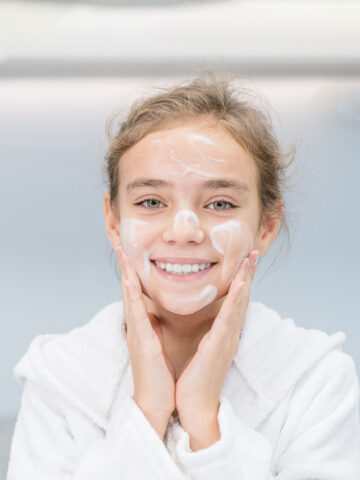Most injuries for kids up to five years old occur in or around the home because that is where they spend the most time learning and growing. Keep in mind these home safety tips to protect kids of all ages in your home. Download this home safety checklist to help make your child’s home safer.
Kids have more freedom as they get older, which teaches them independence and nurtures their curiosity, but they can often overestimate what they’re capable of doing.
“Older children tend to take more risks, so we as parents must walk a fine line between bubble-wrapping our kids and protecting them,” says Amy Frias, community educator at CHOC Children’s and Safe Kids Orange County coordinator.
Batteries
Keep batteries and battery-operated devices out of sight and out of reach. If your child ingests a battery, seek emergency medical attention or call the National Battery Ingestion Hotline, 202-625-3333.
Burns
Getting kids involved in cooking your family’s meals can be a great way to encourage healthy eating habits later in life, but should be done under careful supervision. Don’t hold a small child when using the stove, and always keep sharp and hot objects out of reach.
Carbon monoxide
In addition to a working smoke alarm, ensure your home has a carbon monoxide detector and check its batteries regularly.
Choking
Even when kids are old enough to start learning how to use utensils themselves, make sure food is cut into bite-size pieces. When purchasing a toy or game, take into account the size of its pieces. Keep small items such as magnets, makeup or batteries out of reach, as they could be confused for a toy or candy. Cords and strings from window blinds should also be kept out of reach to prevent choking.
Falls
Install window locks that prevent openings greater than four inches, yet could still be easily removed by an adult in the event of an emergency. Children under 10 years old should not be on a top bunk of a bunk bed. Use liners underneath rugs and in the bathtub to prevent falls. Secure-top heavy furniture to the wall. Move furniture away from windows to prevent falls.
Fire
Make a fire escape plan. Establish a place to meet in the event of a fire in your home, and remind children that getting out safely should be their first priority.
Helmets
As younger children spend most of their time at home, that may include riding bikes or scooters in the driveway or neighborhood. Always make sure children wear a properly-fitting helmet. Here’s a helmet safety tip sheet.
Medicine
Remind children that medicine is not candy. Medication should be stored out of reach and out of sight, and in a locked location. Keep in mind that medicine is usually stored in more places than just a medicine cabinet, and can usually also be found in a purse, nightstand, etc.
This article was updated on March 30, 2020.
Get more expert health advice delivered to your inbox monthly by subscribing to the KidsHealth newsletter here.
Get more safety and injury prevention tips from CHOC experts
More children are affected by injuries than all other childhood illnesses and diseases combined. Most of these injuries are predictable and preventable. Here’s how to keep your child safe.





